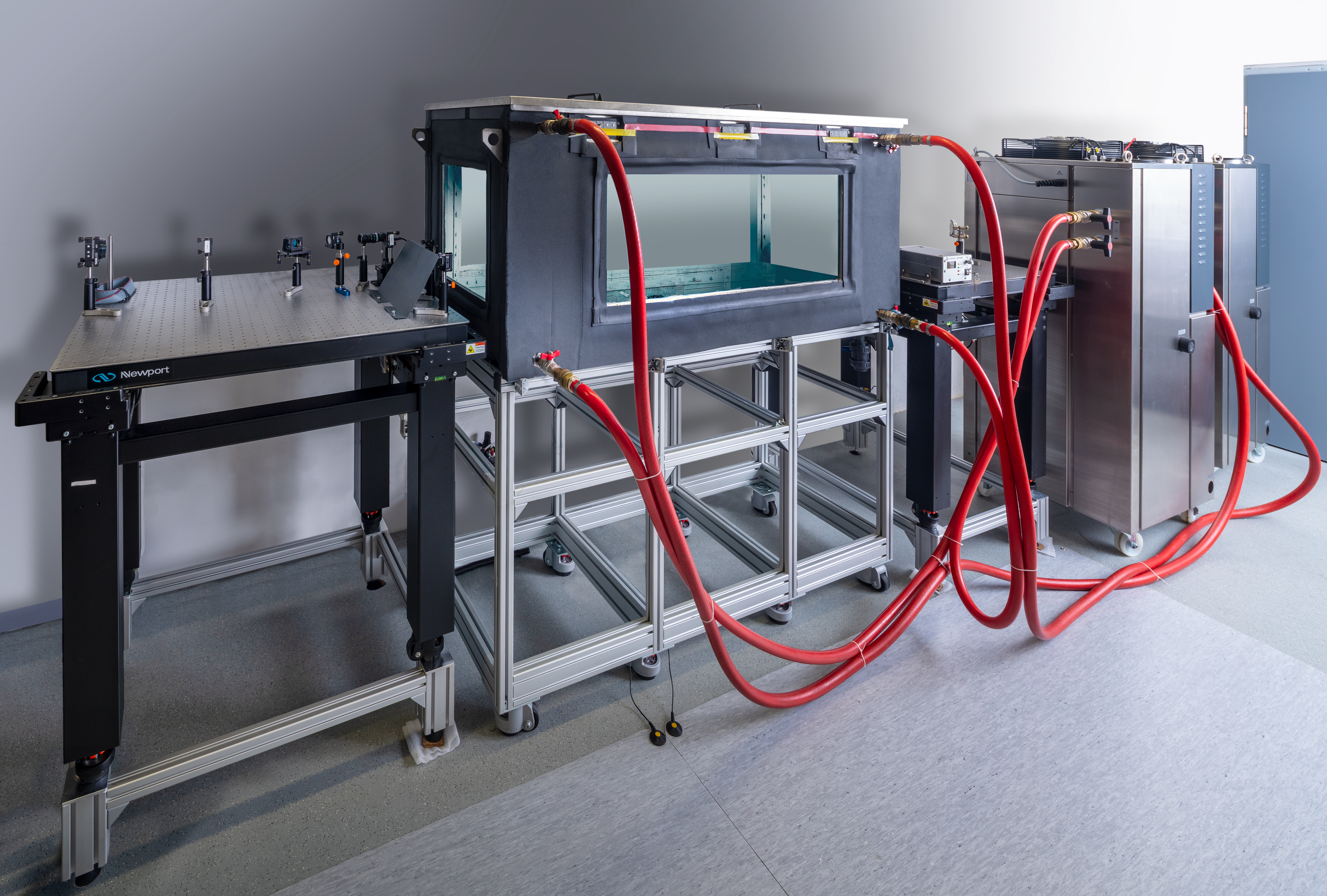Conventional underwater communications systems that transmit data using acoustic waves provide low data rates (~kbit/s) which are insufficient to meet modern data demands such as streaming high-resolution video from underwater vehicles. To achieve higher data rates, underwater optical communications systems that transmit data using visible light can be utilized.
Despite the availability of significantly higher bandwidth, the underwater environment poses challenges to the design of optical communications systems. In clean ocean water, extinction due to absorption and scattering very strong, and limits the useful range of underwater communications to ∼100 m in the blue-green spectral window. Additionally, underwater optical turbulence stemming from minute differences in water’s refractive index and salinity perturbs the transmitted laser beams effecting the fidelity of received signals. In the Adaptive Optics group at Fraunhofer IOSB, we study the effect of underwater optical turbulence on transmitted laser light and try to compensate the effects of turbulence using adaptive optics systems.
To study the effect of real underwater optical turbulence, the Adaptive Optics group has established an Underwater Optical Communications Laboratory at Fraunhofer IOSB. The lab is equipped with a 500 L water tank with optical grade glass windows and a temperature control system. By leveraging the temperature control system to create a temperature gradient in the tank, optical turbulence can be generated and its effect on optical communications can be analyzed.
 Fraunhofer Institute of Optronics, System Technologies and Image Exploitation IOSB
Fraunhofer Institute of Optronics, System Technologies and Image Exploitation IOSB 